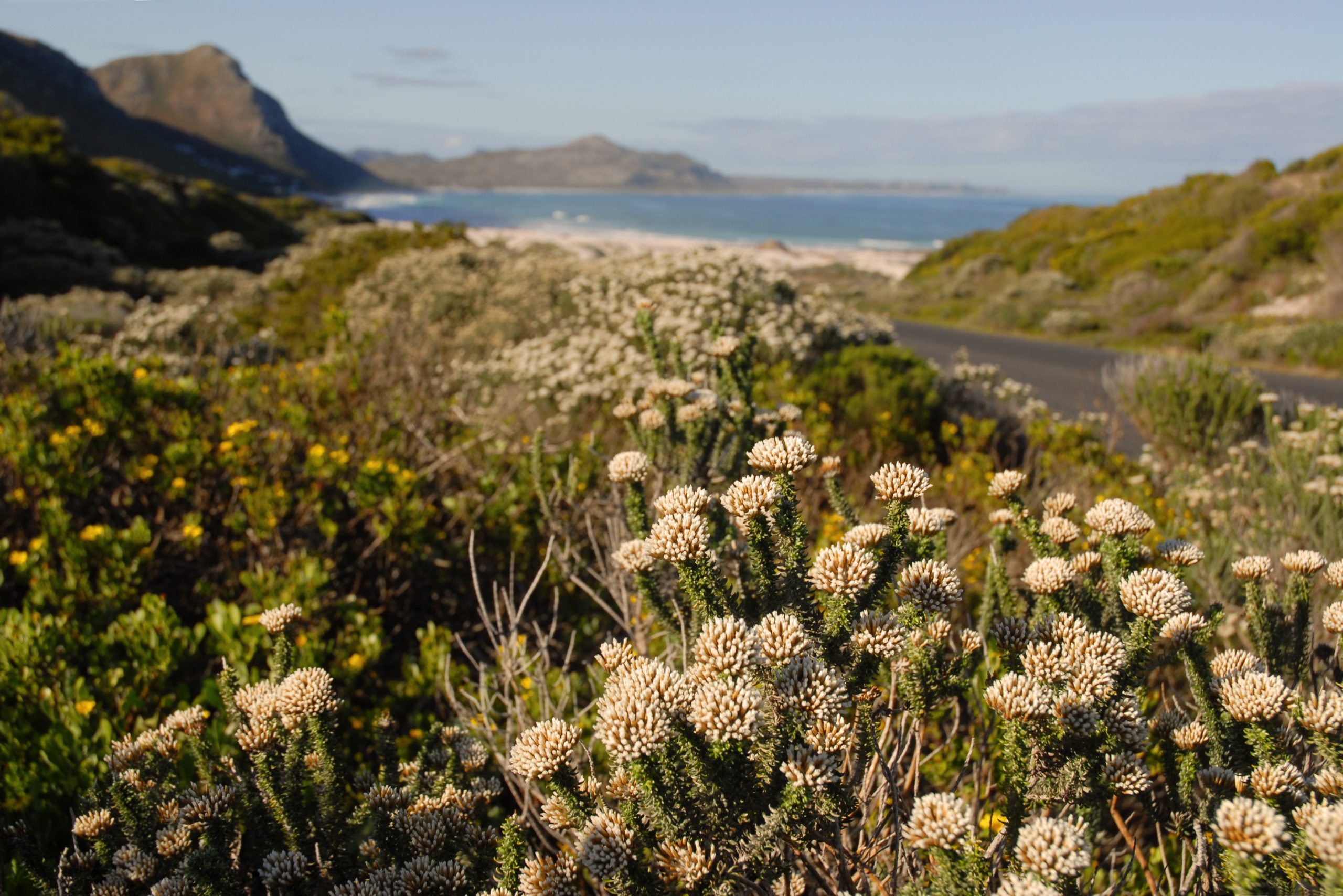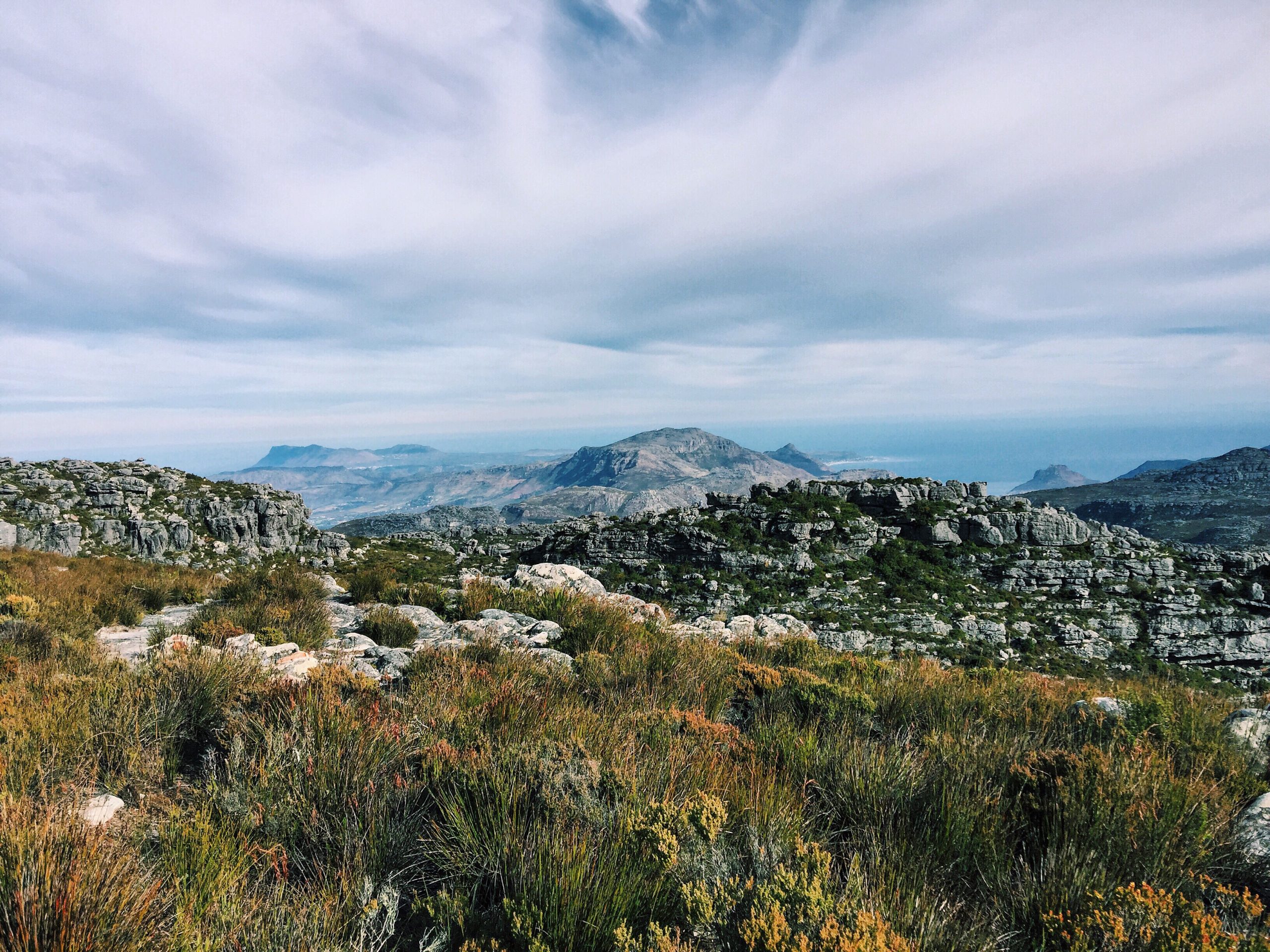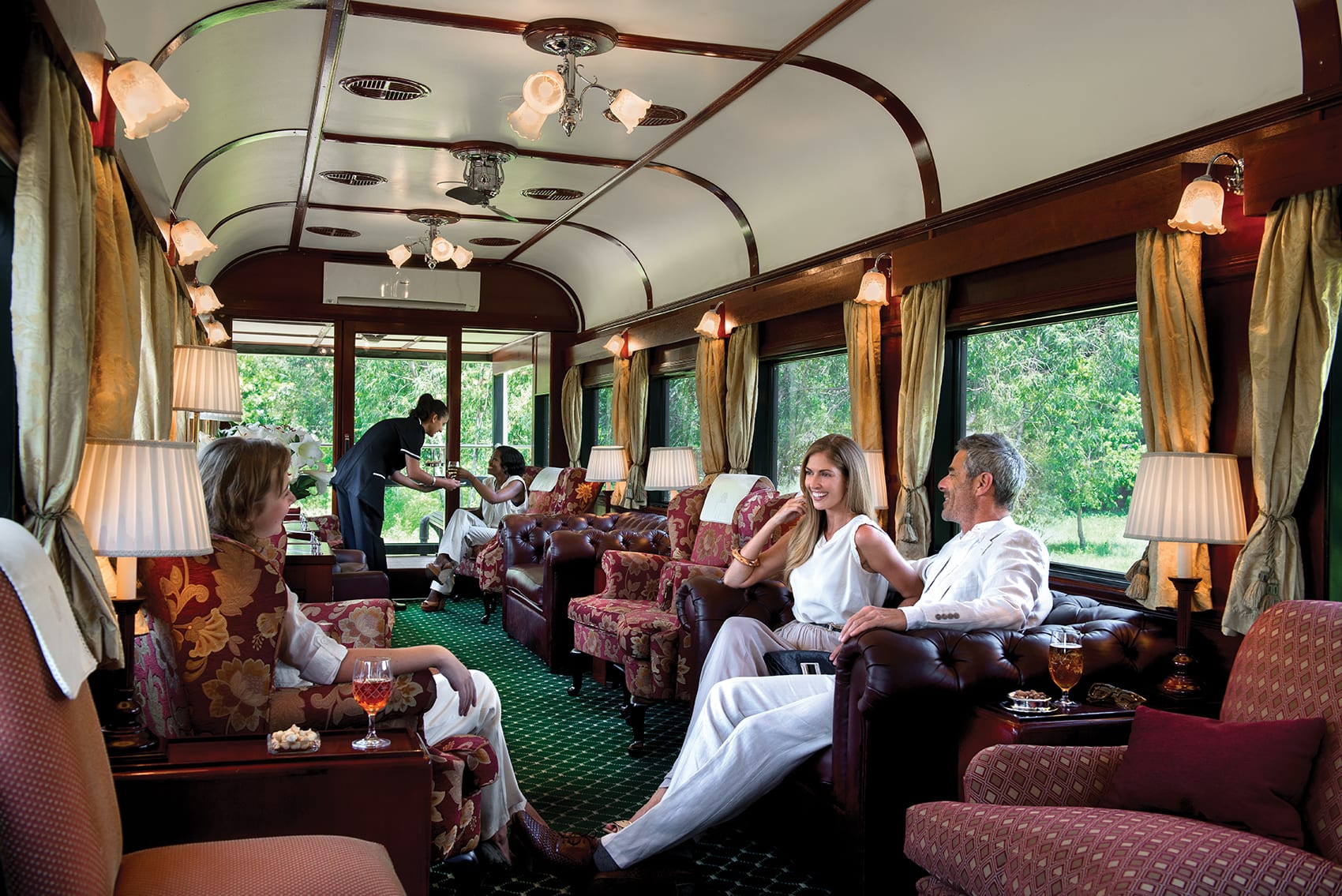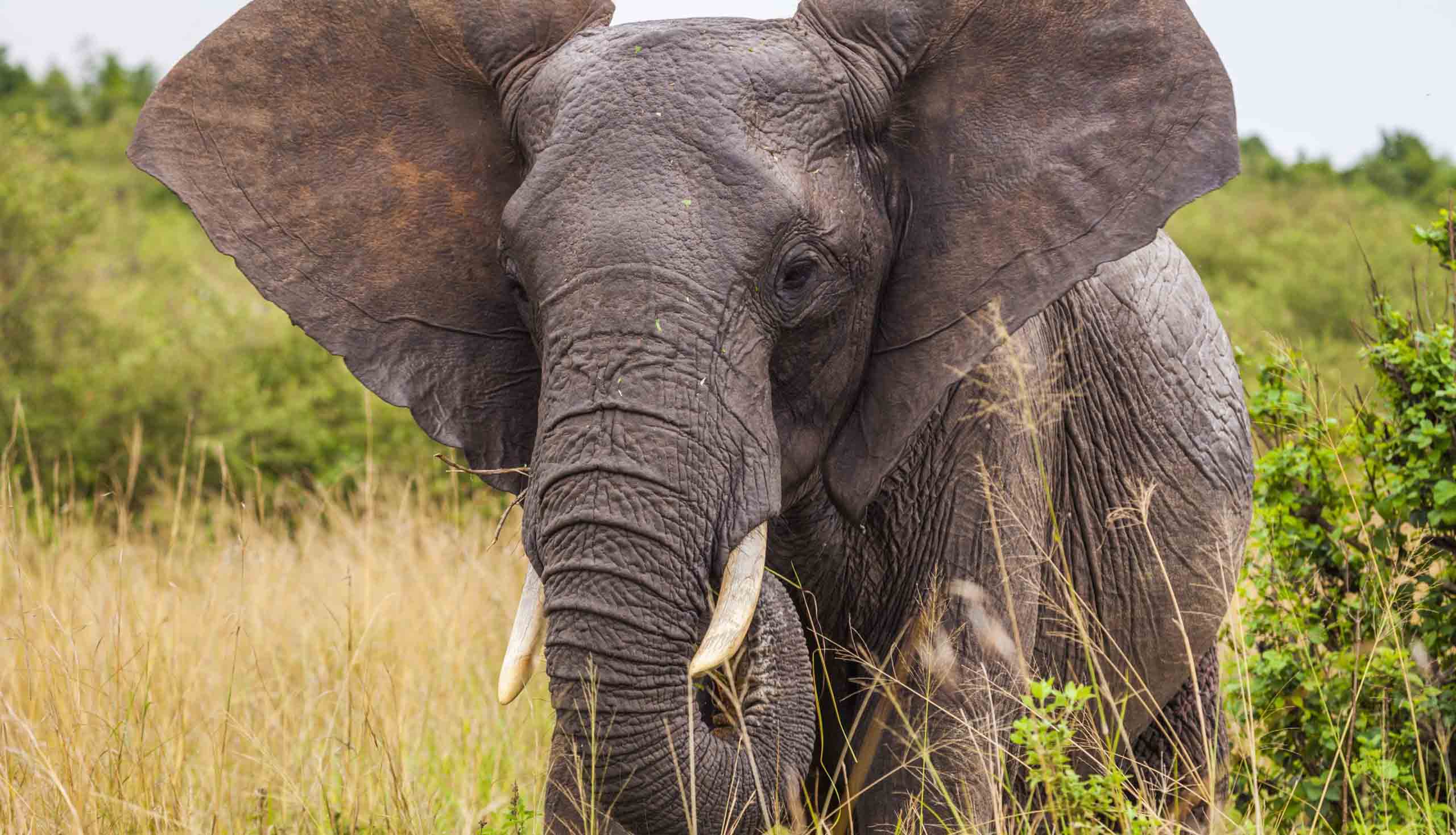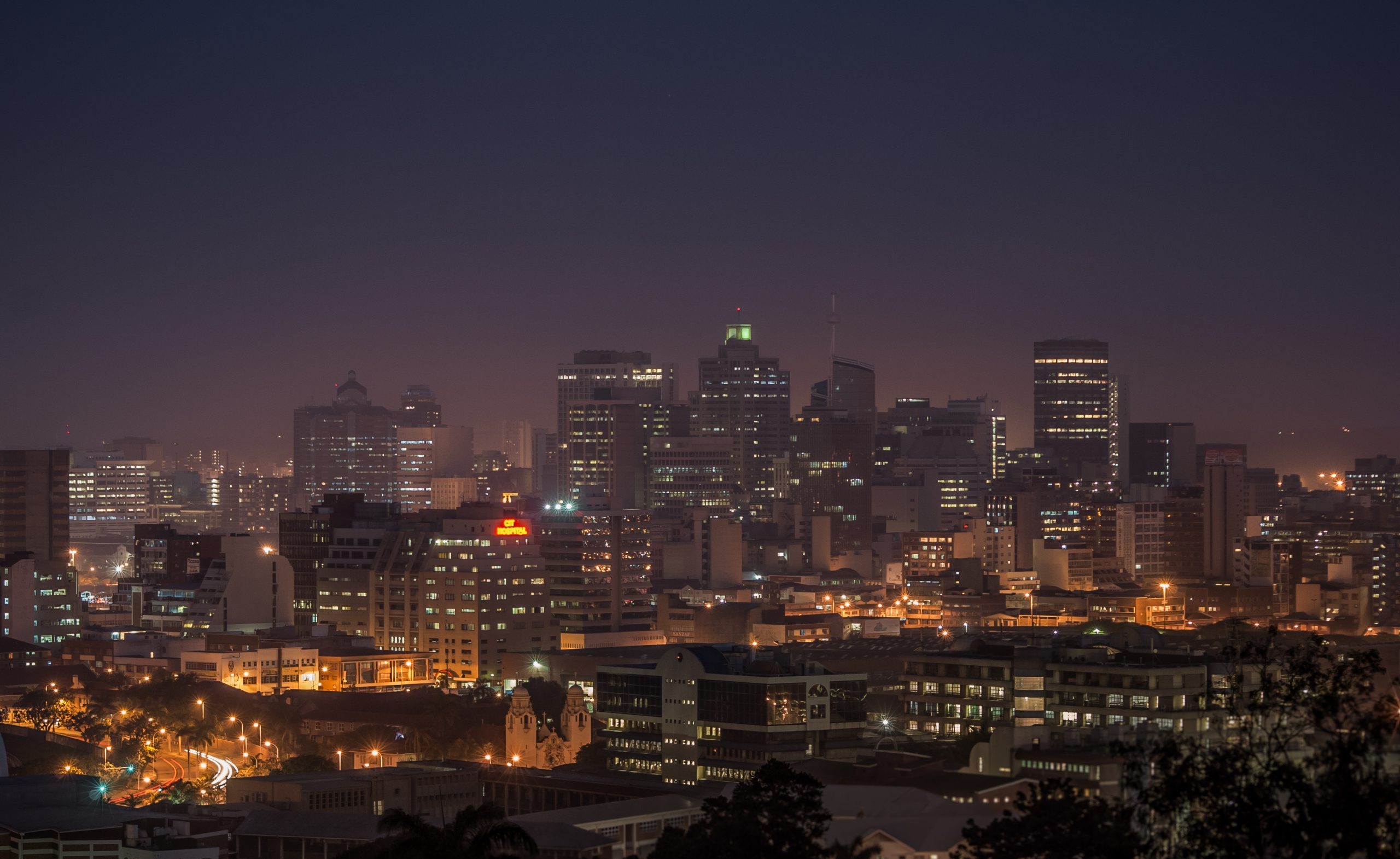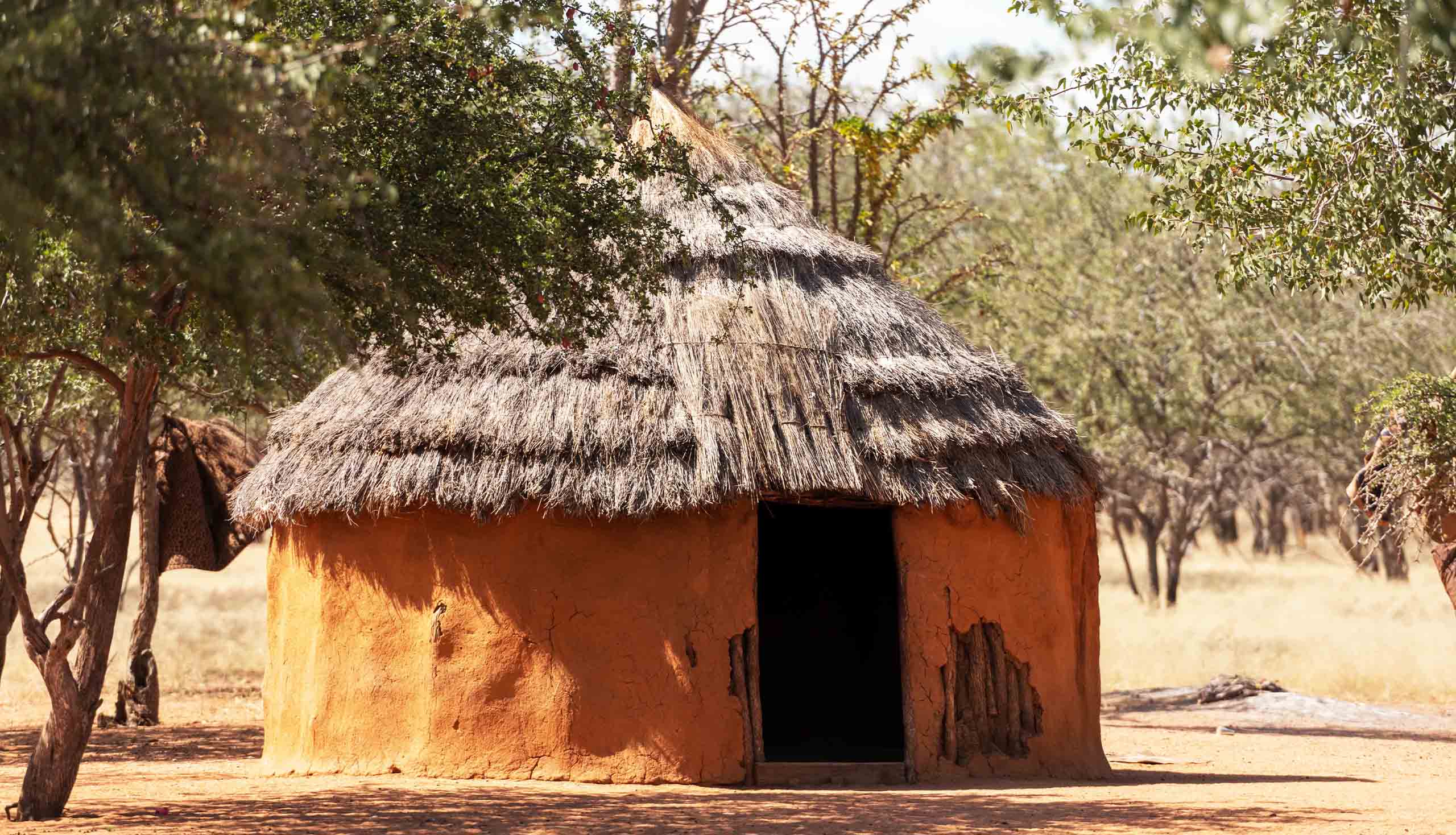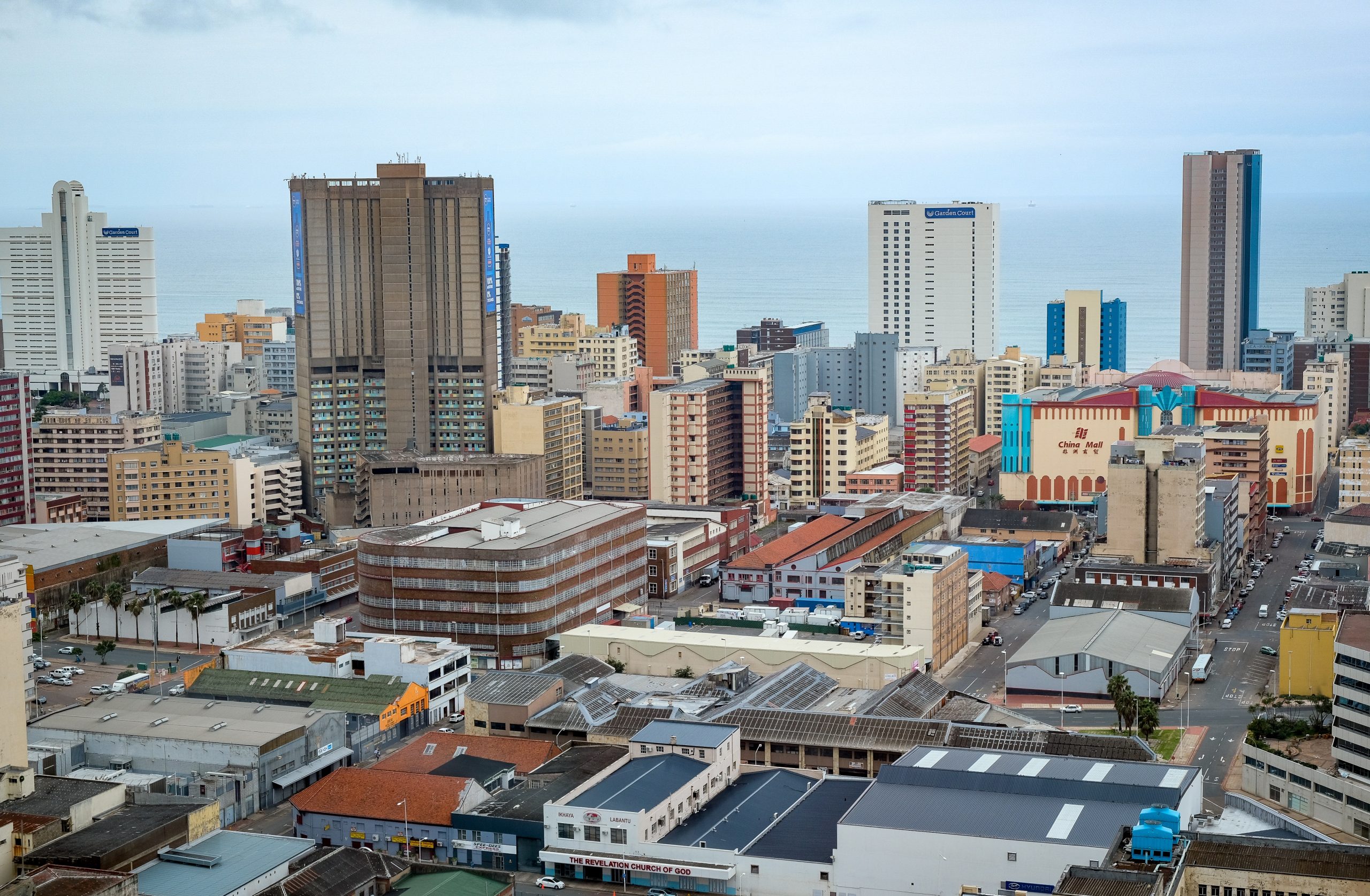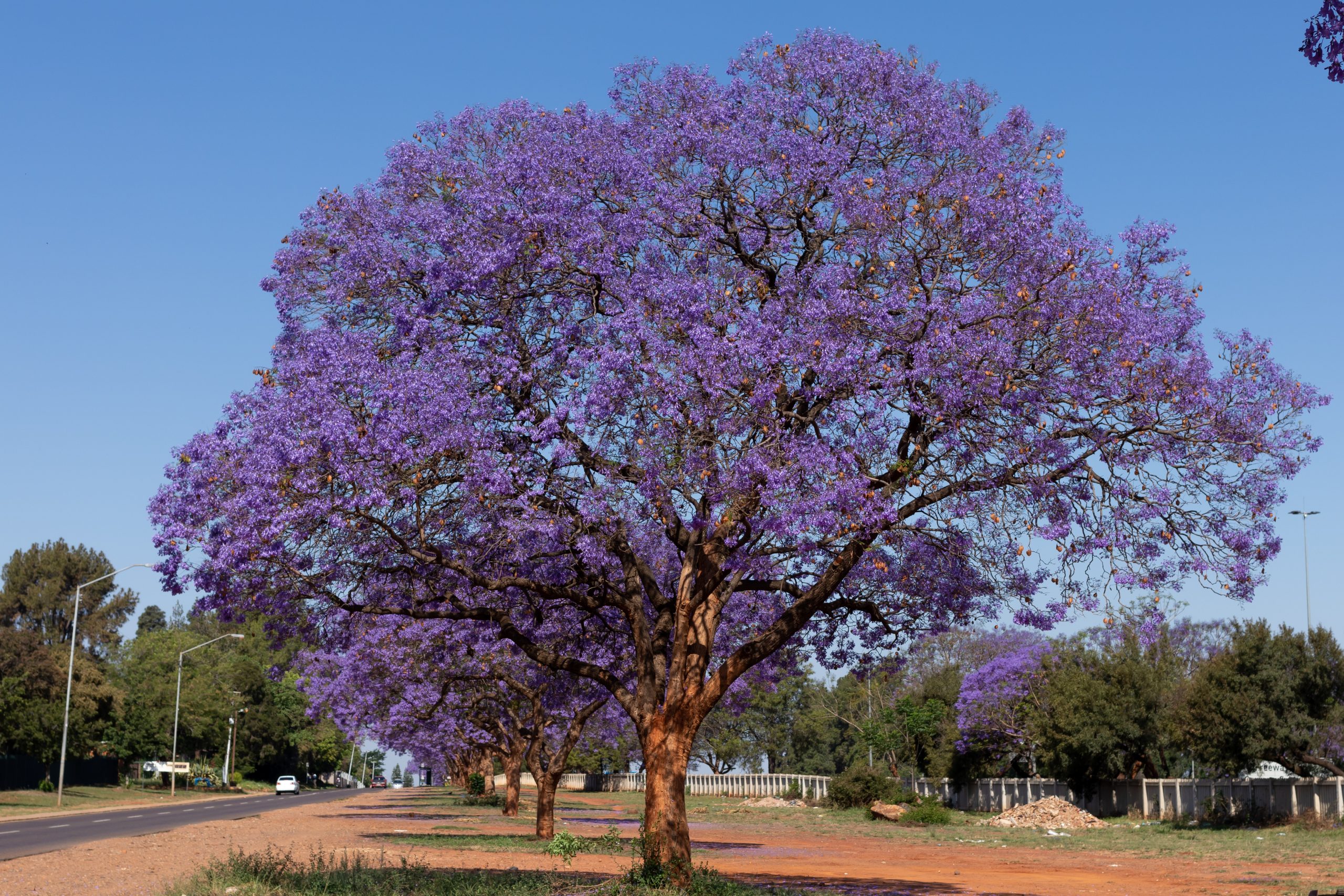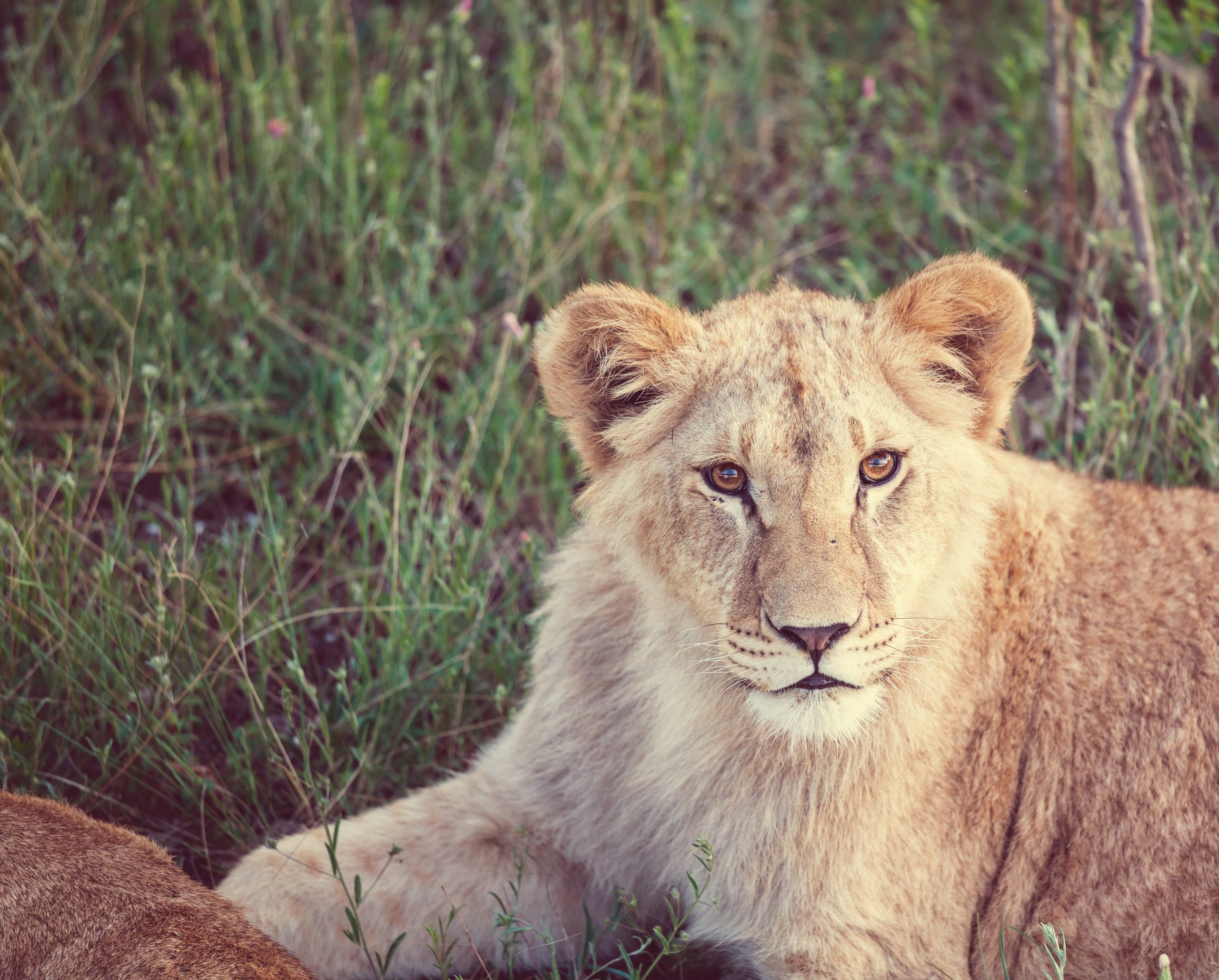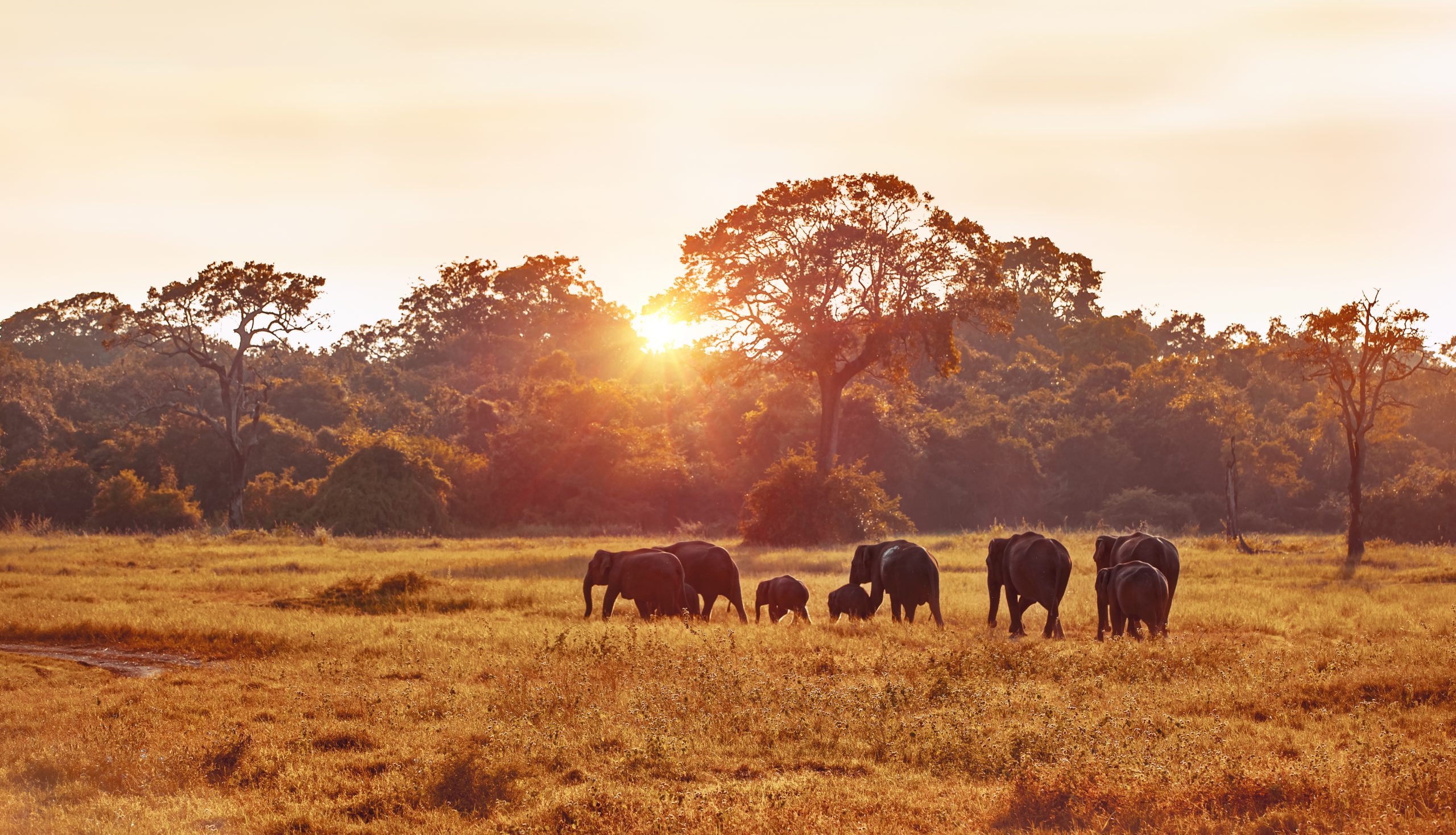SOUTH AFRICA Day 1 in South Africa — Arrival, Cape Town, and Robben Island It’s been just over 24 hours since landing …
SOUTH AFRICA
Day 14: Making Hemingway
Proud — Tracking Rhinos on Foot
Other than the fact that there is very little to do once darkness sets in, the other reason we went to be around 9 PM is because our days start at 4:30 AM. Thirty minutes is given for getting ready and eating some food, and then the hike begins at 5.
But before we get to that, let’s talk about sleeping in the African bush since that is an adventure in itself. As I said in my previous post, we had the full 60,000 hectares of this reserve to ourselves, not counting the two guides and the camp attendants. Furthermore, our tent was the furthest from the main part of campsite. So, with these two conditions, we were in for an interesting night of psychological wonder and torment. Next to my cot was a mesh net window that looked out into the fields and thickets beyond our campsite boundaries. As I lay in the darkness of my tent peering out into the void, the sounds of animals started to pick up — bird calls, baboon hoots, antelope footsteps, and lion growls. Some were near, and others came from quite a distance away. But together, they created a cacophony of various sounds that can only be generated in the African bush. The growl of the lion was the most recognizable. Not only because we had just seen them face to face a few hours before, but also because of their proximity to our campsite. We were in unanimous decision that there would be no bathroom trips until morning. The grunts and roars of lions are very interesting. They carry extremely well through the medium of air and even when the lion is a mile away, it can still sound like they are just outside the tent. I experienced this for the first time at Tsavo National Park in Kenya back in 2001 when a family of around a dozen lions staked out a watering hole about a hundred yards from my tent. Even the tiniest whimper would sound like the creatures are just on the other side of your tent wall. The eerie quietness of the bush coupled with the irregular growls of the lions made it an exciting, yet uneasy, night.
In any case, we were awaken exactly at 4:30 AM, and after brushing our teeth, changing, and having a quick bite to eat, we set out from camp on foot heading northeast from camp. It was a cloudy day, and so there really wasn’t a sunrise to stop and admire. Instead, there was just an overall lighting up of the sky around us. Our guides stopped every so often to point out a bird, plant, or animal call off in the distance. Soon, we hit upon a dry river bed and and walked down the shallow bank and into the sandy bottom. There, one of the guides spotted a number of tracks and it was immediately recognized as the white rhino. What was even more interesting was that one of the rhinos had actually laid down in the sand on its side, creating a rather large imprint of the entire animal, including its horn. It would be very similar to a crime scene where the outline of the victims body was taped down onto the floor. It was immediately decided that we would track this group of rhinos and see if we could find them.
For the next forty five minutes, we followed the tracks down the river bed, up the banks and into the bush, and then down another river bed to the opposite side. Then, as we rounded a corner that followed the flow of the riverbed to the left, we pretty much stumbled upon a herd of five adult white rhinos! Our lead guide immediately held up his hand to signal us to stop where we were and then another gesture to back up. We all did so until we could no longer see the rhinos. This was exciting! The next course of action was to determine how to best track and observe these skittish creatures without giving ourselves away and having them either charge us or flee in the opposite direction.
Looking around, we spotted a hill off to our right and in the general direction that the rhinos were grazing in. In fact, the hill and the river bed formed a natural corridor that the rhinos would most likely stay between. So, we quietly climbed up the roughly 75 foot hillside and walked along the ridge line directly over the herd of rhinos. As long as we remained quiet while we walked, there would be little chance of being spotted by them. This is because we were too high up for the rhinos to smell us, and also because white rhinos have very horrible eyesight. In fact, we were told that they are almost blind beyond a few dozen yards.
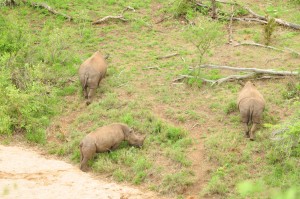


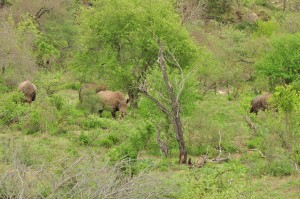


For the next 90 minutes or so, we followed this group of rhinos as they made their way along the embankment looking for good grazing areas. Eventually, we saw a rather large field where the guide believed they would spend some time in. We then walked a bit faster to get in front of the rhinos and made our way back down again and camped ourselves behind some large boulders. Sure enough, a few minutes later the group made its way into the clearing and spent quite a bit of time there. At one point, one of the creatures came within 30 feet of our hideout while calmly grazing on the vegetation. It was spectacular! Eventually, the rhinos continued on in the direction they were heading. We could have followed them, but after more than two hours of tracking and viewing them, we felt that we should move on and keep exploring.
Having completed that spontaneous and memorable adventure, our little group moved on. Other than various antelope species such as impala and kudu, there wasn’t too much else that was memorable enough to talk about in this morning walk. However, we did spend a good amount of time looking at the antics of the dung beetle and understood the part they play in the ecosystem. By 11 AM, we had returned to our camp, ate a hearty lunch, and turned in for an mid-afternoon siesta. I spent it by grabbing one of the binoculars from the guides and spent an hour or so scanning the trees and the horizon for wildlife.
At 3 PM, we set off again for the afternoon walk followed by the evening drive. Interestingly enough, on our way to the area we would begin the hike from, we arrived at a small watering hole and bumped into another group of rhinos. This time, however, the meeting was short and swift. No more than five minutes into the encounter, the mother rhino got a whiff of us and ran off quickly with her baby. I did have the time to capture a couple of good shots, but this opportunity paled in comparison to the one earlier in the day. Disembarking from the Land Rover, we started at a little lake and spotted several hippos lounging around with their heads barely sticking out from the water’s surface. Every couple of minutes there would be a snort of some sort and then the lake would return to its placid look.
This afternoon, we were on the lookout for Cape Buffalo (also known as the African buffalo), one of the Big 5 species of animals that people look for on safaris. Brian told us there were a large number of them in the area so it wouldn’t be too difficult to find time. Sure enough, he was correct. We did end up encountering a large herd of the buffalo shortly after we began hiking. It was the hot part of the day, so we made for the various watering hole sites where an encounter would seem most likely. At the first watering hole, quite a few of these creatures were clamoring about trying to get their fill of the muddy waters of the bush. Although quite dangerous, the Cape Buffalo looks pretty dopey — almost as if they have no idea how they ended up on this planet. Unlike the complex intelligence of an elephant or the deliberate and stealthy movements of a lion in pursuit of its prey, the Cape Buffalo just stands around chewing cud for a large part of the day. It may be one of the Big 5, but its easily the least interesting of them all.
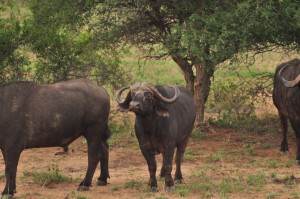


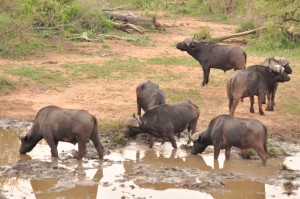


Since there were a number of these buffalo herds all over the place, we were able to hike from one area to another and continue our encounters with them. While doing so, we also stumbled upon a very cool looking leopard tortoise. It’s called that due to the spots on its shell that are similar to the ones seen on a leopard’s coat. Like others in the tortoise family, the leopard tortoise also has a long life span and can live up to 100 years.
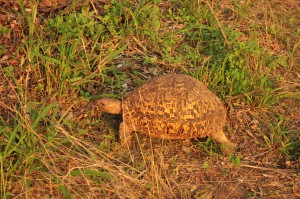


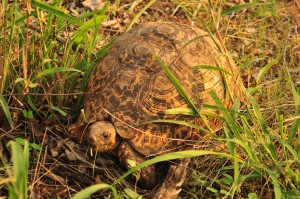


Having another sundown by the Land Rover, we did another night drive for just over an hour, but didn’t see anything much of interest, and certainly no lion sighting at all this evening. We then returned to Tusker camp for dinner and then went to bed by 9:30 PM after a nice talk with Phil about working as a guide in South Africa.
Share this post:
RELATED POSTS
SOUTH AFRICA Day 2 – Walking Around Cape Town The morning greeted us with a completely different weather pattern than the previous …
SOUTH AFRICA Day 3 – To the Ends of Africa Well again, no luck. The morning dawned with another overcast day even …
SOUTH AFRICA Day 4 – AfricaCom and Table Mountain At last! Today turned out to be bright and beautiful. The sun was …
SOUTH AFRICA Day 5 – Last Day in Cape Town and AfricaCom Today, November 11, was the second and last day of …
SOUTH AFRICA Day 6: The Rovos Rail – Pretoria to Durban The Golden Age of train travel is now more or less …
SOUTH AFRICA Day 7: Rovos Rail and Safari Drives Sure enough, we were woken up at 5 AM by our hostess, Sarah, …
SOUTH AFRICA Day 8: Rovos Rail Journey Ends at Durban, South Africa There was no early morning wakeup call today. In fact, …
SOUTH AFRICA Day 9: A Day In Durban, South Africa We woke up today to a much nicer morning than the rain …
SOUTH AFRICA Day 10: 24 Hours with the Zulu Not wanting to spend another day within Durban, we opted to go and …
SOUTH AFRICA Day 11: Farewell to the Zulu Village, Then Durban to Pretoria Even in the best of travels, there is always …
SOUTH AFRICA Day 12: Out and About in Pretoria, South Africa I remember learning the song We Are Marching To Pretoria back in 3rd …
SOUTH AFRICA Day 13: Begin Walking Safari in Kruger National Park This morning would start the high point of our trip – …
SOUTH AFRICA Day 15: Finishing off the Big Five Game Animals in Kruger National Park Hands down, today was a great safari …



